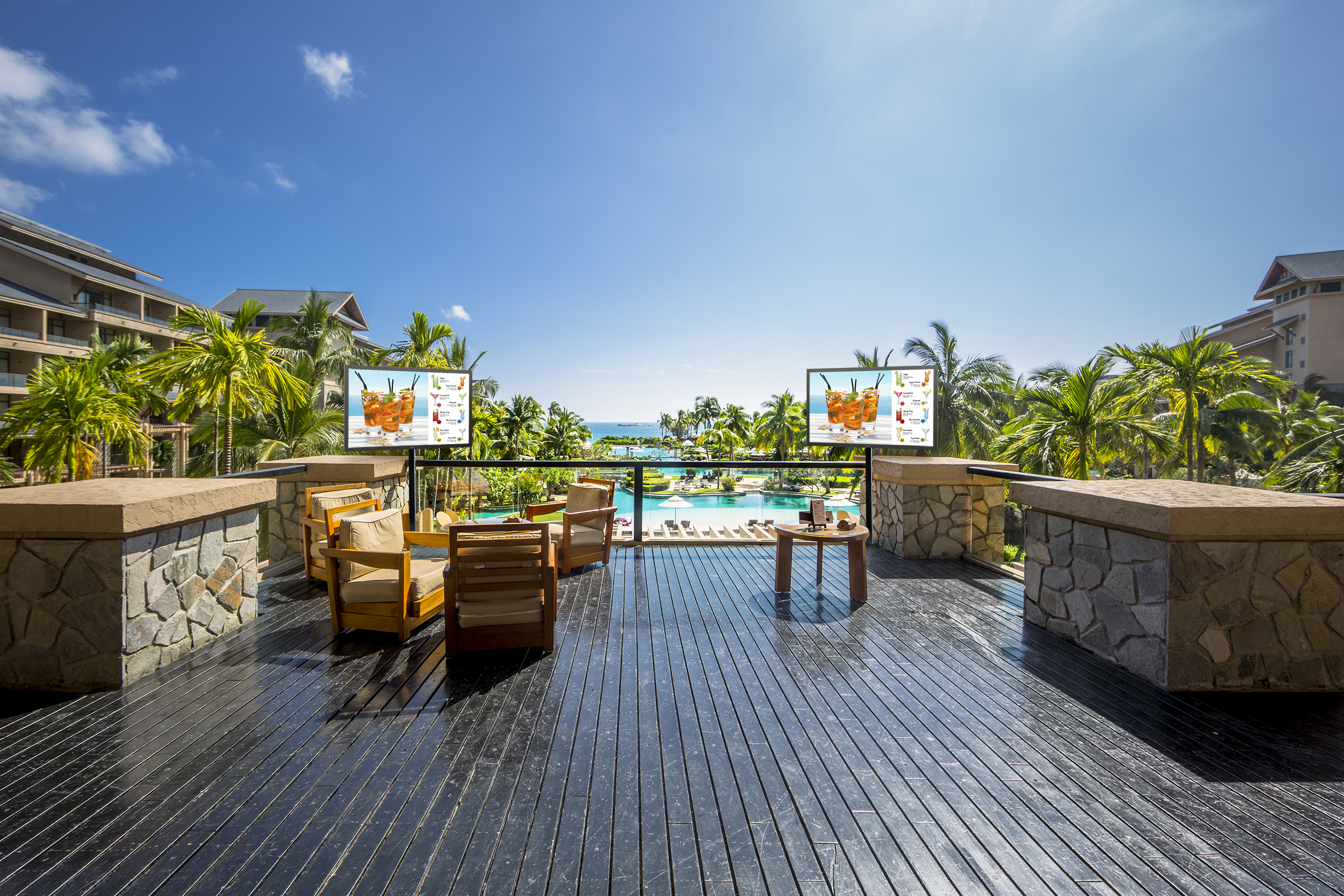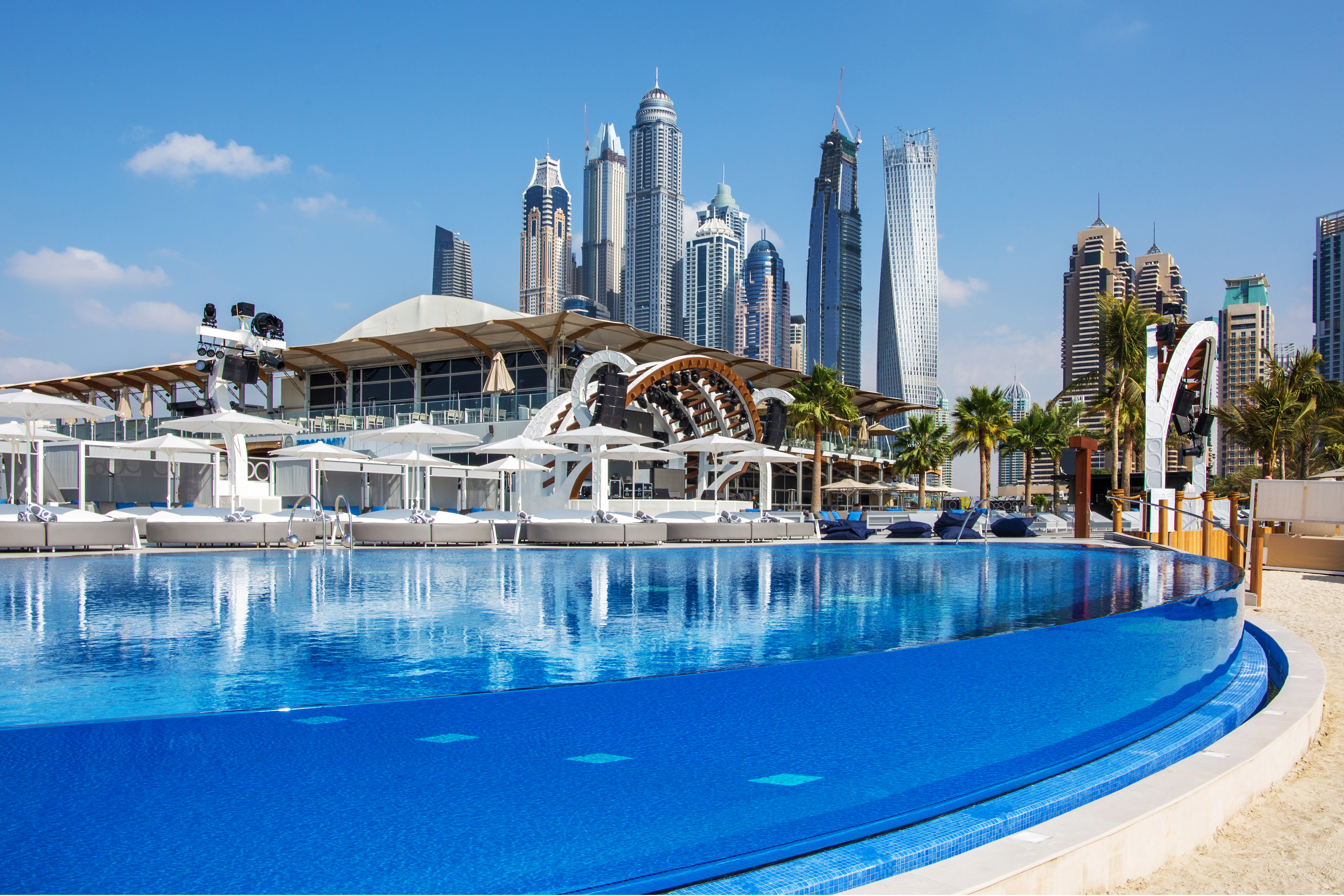When AV is installed outside, it comes up against a multitude of additional challenges that “indoor AV” does not, the most obvious being environmental. Spatial and positioning hurdles are also significant. Manufacturers and integrators have to work hard to overcome these challenges, aiming to ensure that the AV-out-of-doors experience is on a par with its “housed” equivalent.
“There are several challenges we often face when integrating AV into these types of environments,” said Bryan Meszaros, CEO and founder of OpenEye Global and past president of the Society for Experiential Graphic Designs (SEGD). “First and foremost, is [there] sufficient placement so that the technology can be seen by the public and placed in a way that allows room for comfortable interaction? We also face the challenge of sourcing technology that will stand up to a multitude of environmental conditions.”
Wind, rain, sun, and seawater are the sort of conditions that manufacturers have to consider when they’re designing AV products for the outdoors, with integrators ensuring that placement aids product longevity.
“In addition to our standard installation models, d&b produces options of our loudspeaker systems for weather resistance in permanent outdoor placement, and seawater resistance for installation in the harsh conditions aboard cruise ships or even beach-side resorts,” said Marc Lopez, vice president of marketing Americas, d&b audiotechnik.
“In addition to weatherization, we also provide custom solutions for rigging where standard options may not be viable (stadium installation, for example), custom colors, or even textures to blend or complement with its surroundings.”
d&b audiotechnik products are robustly engineered and carefully manufactured to withstand temporary outdoor use, with additional steps in modifying them for permanent outdoor use being “not too difficult to achieve,” according to Lopez.
“The real challenge was creating long-term durability for saltwater resistance that met our expectations. Our team has pursued the development of special materials, learning much more about metallurgy and materials science along the way.”
Placement is a key factor, of course, especially in social settings like outdoor malls, restaurants, and hotel pools—particularly when it comes to “visible AV” such as displays.
“We look at a couple of key factors,” said Meszaros. “First, viewing distance. How far out do we intend our audience to view the displays, and from which direction may they be coming? Generally, what is the typical audience travel pattern?
“Second, durable integration, meaning when and how the tech is integrated. Is it protected from the elements? How accessible is it to the public? Could it be susceptible to vandalism?
“And last, obstructions. Would the placement create a bottleneck or an unnecessary distraction?”
Positioning for audio is also hugely important, with spacious outdoor environments having a massive effect on sound quality. This is where manufacturing know-how comes into play.
Indeed, according to Greg Kirkland, director of application install, Americas, at L-Acoustics, the challenge isn’t with the capability of audio product lines but rather with perception.
“When it comes to outdoor AV projects, the biggest hurdle for an audio manufacturer is to convince the client that their outdoor sound should be—and can be—as qualitative as indoor sound,” he said.
All L-Acoustics product lines are designed for the most challenging outdoor deployments, so build and sound quality shouldn’t be an issue—leaving the challenges of placement in an unwalled environment as the main obstacle for integrators to overcome.
“We currently have products that are standing up to outdoor weather conditions on cruise ships or at beachfront hospitality venues such as Zero Gravity in Dubai,” said Kirkland.
Paying customers aren’t the only beneficiaries of outdoor AV’s enhanced experience. Hotels are able to increase the rental cost of cabanas by installing upgraded and enhanced AV. Restaurants and bars may also experience an increase in dwell time—as well as food and beverage revenue—as guests are encouraged to spend more time at outdoor bars, watching sports or other entertainment.
“In specific markets like Hawaii, guests are looking to spend every moment of their time outdoors,” explained Megan Zeller, business development director at Peerless-AV.

“It is appealing to be able to watch the game or keep up with the news while poolside with their family, instead of being inside a restaurant or hotel room. Guests/patrons can view Peerless-AV outdoor displays in the full sun, and at any angle through off-axis viewing.”
Outdoor AV solutions can also be useful for wayfinding or disseminating information when implemented in outdoor malls, resorts, college campuses, and airports. And there are environmental benefits, too.
“While budget is often a concern, we are able to make the argument to use dedicated outdoor products with specific customers, such as the Forbes Travel Guide and other four- and five-star properties, to become more sustainable and reduce their carbon footprint,” said Zeller.
“By using dedicated outdoor products with longer lifespans and less waste, customers can aid in sustainability. For instance, indoor TVs and displays that are left outdoors do not have a reasonable life cycle, and they fail in three to six months in high-humidity environments. Investing in outdoor AV makes sense fiscally and environmentally.”
The market for outdoor AV products and installations is only set to grow over the next few years as products become even more robust and costs continue to fall, as integrators become more proficient and clients more convinced of outdoor AV’s viability and comparability to indoor AV.
“The technology has evolved drastically, from more displays being manufactured to be placed outdoors to withstand the environment to lower cost in general,” explained Meszaros. “From a design perspective, more architectural firms are looking at ways of incorporating AV into the façade of buildings to create unique visual identities. I see more of that happening.”
One of the biggest areas of expansion in outdoor AV is themed entertainment, including sports facilities. Sports franchises are widely using products from the likes of L-Acoustics. The company has also helped several top theme parks and iconic themed destinations by reinforcing audio for rides, attractions, and shows.
“We are certain the outdoor AV industry has great days ahead of it, as artists, creators, and venue managers grow more ambitious in their projects,” said Kirkland, and realize that companies like L-Acoustics have products to support their vision.
“Audiences are not just growing accustomed to it but are expecting it. Whether it’s the cruise industry with rock ’n’ roll themed trips, experiential art and sound collaborations in public spaces, or outdoor day clubs at sunny resorts worldwide, the demand for concert-grade audio in an outdoor setting is rapidly expanding.”
